However, complex bunkers and pillboxes were expensive and time-consuming to build.
One of these was adapted to mount the Pzkpfw V Panther turret and take advantage of its tremendous firepower.
This project, dubbed Pantherturm, drew considerable interest from Hitler himself.
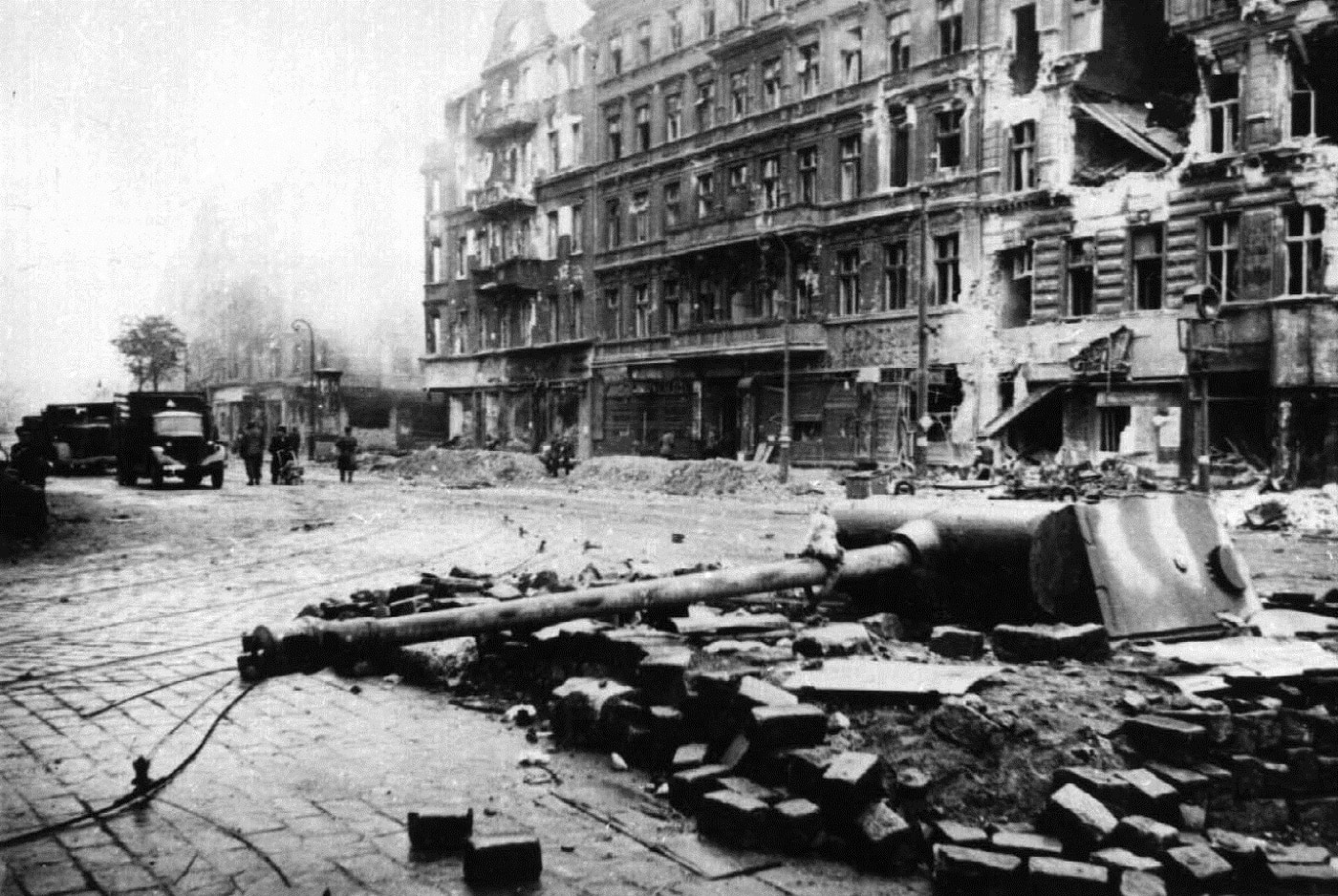
The bitter end: Pantherturm in a hastily prepared position on a Berlin street, May 1945. Image: Author’s collection
Even though the upper box was intended to be buried, it was still armored.
The roof featured 100mm thick armor protection, and incorporated the turret race.
The walls were 80mm thick and provided bins that held 175 rounds of 75mm ammo.
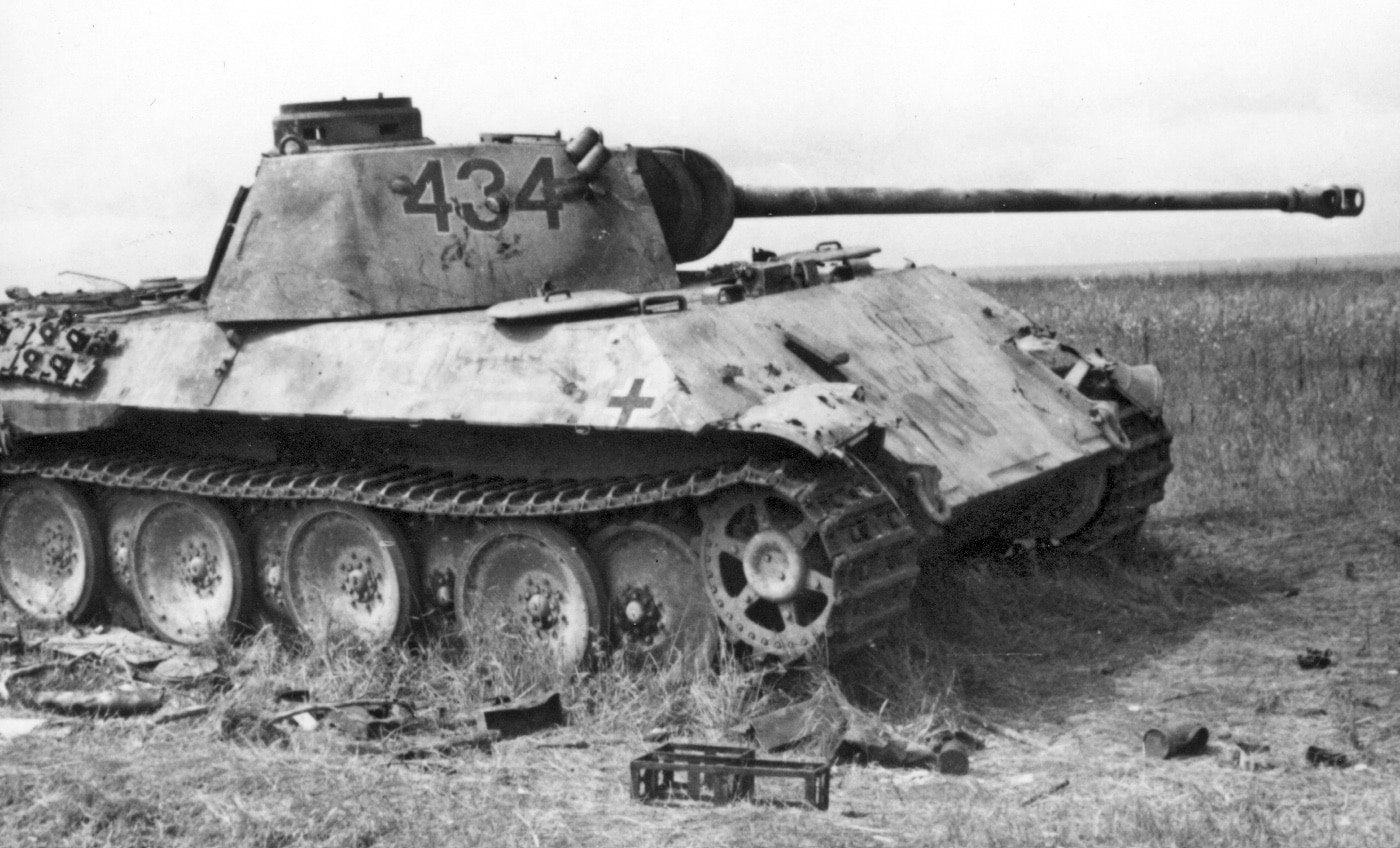
An early Panther Ausf D tank knocked out on the Eastern Front. The main gun was a highly effective Rheinmetall-Borsig 7.5 cm KwK 42 (L/70). Image: Author’s collection
The machine gun ammunition for the coaxialMG34(4,500 rounds) was stored in the turret.
The lower box:This 6-foot high structure provided the living quarters for the three-man crew.
Positioned lower in the ground, it was protected by less armor: exterior walls were 70mm thick.
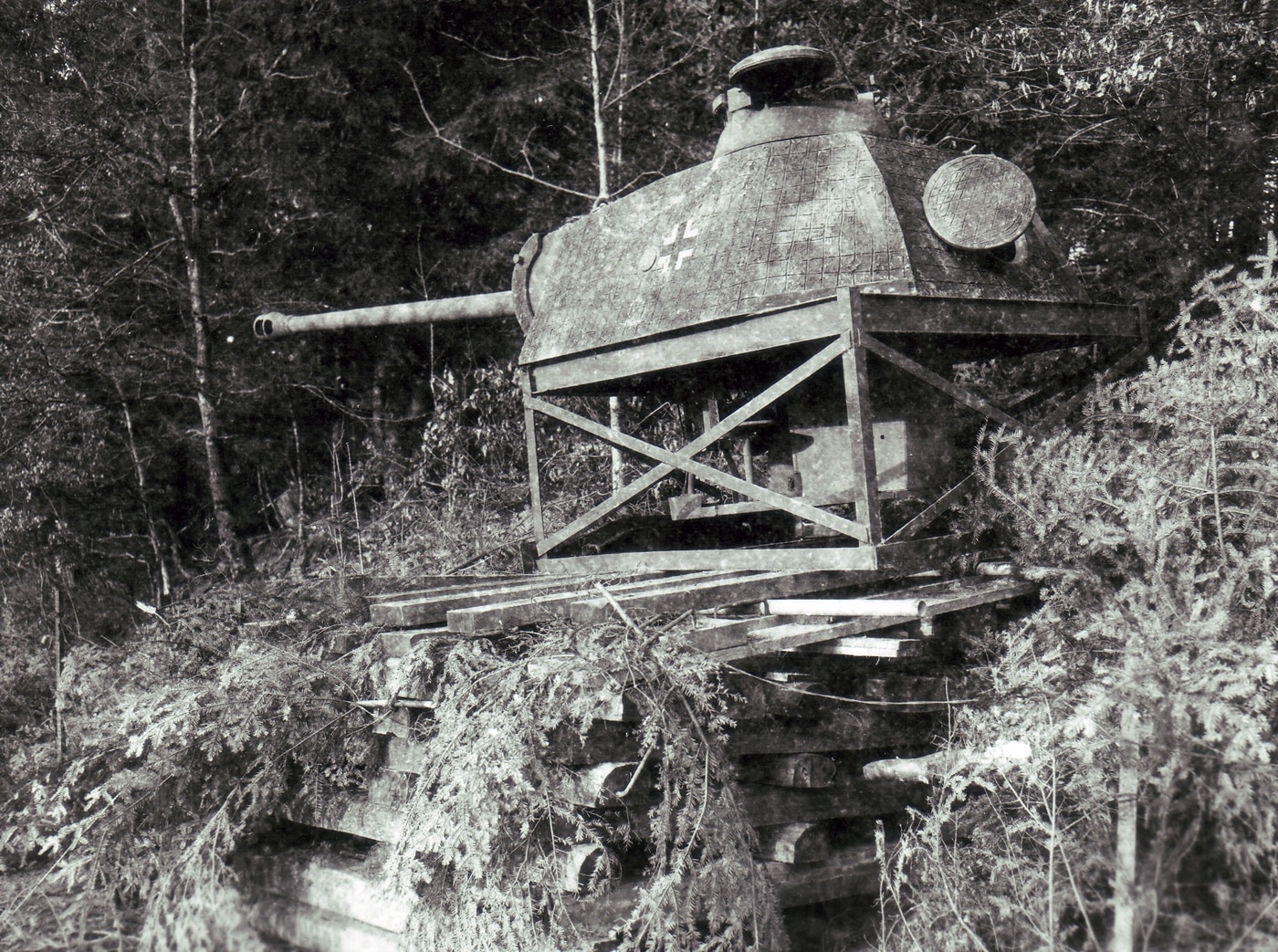
A Panther turret waits to be installed into a Pantherturm bunker near Saalis, France. This turret was reclaimed from a derelict tank — it has an application of Zimmerit, anti-magnetic mine paste. Image: NARA
If a radio was installed, the communications gear would replace one bunk bed.
The escape hatch from this compartment led to a wood-lined shaft with climbing rungs.
This compartment also had the main door (equipped with a pistol port) leading to a camouflaged trench.
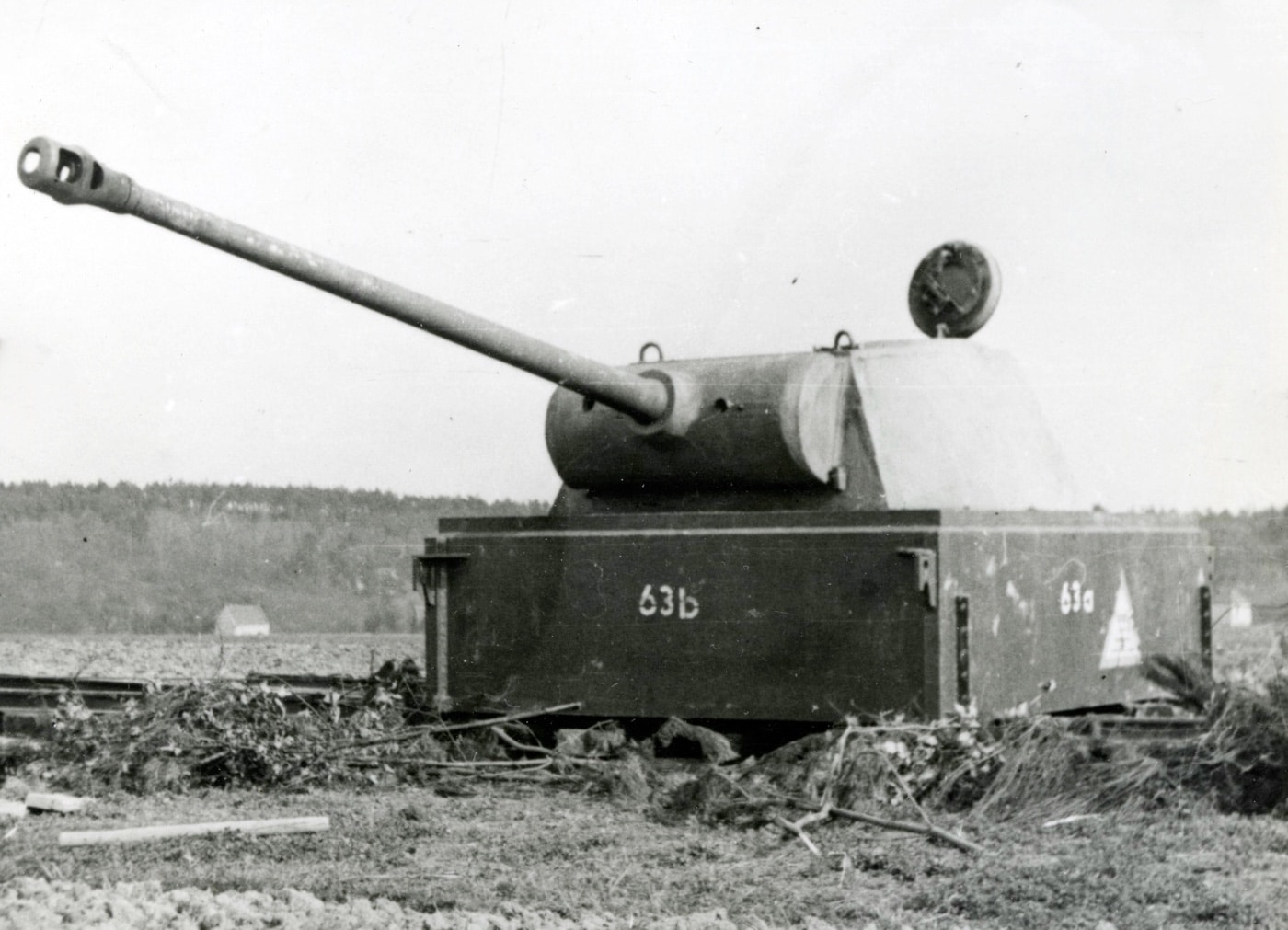
A “Pantherturm” prefabricated pillbox, showing the armored upper box fighting compartment. This was normally buried up to the top lip of the box. This is a simplified “Ostwallturm”. Image: NARA
The initial Panther turrets were fitted without a power traverse and thus were operated by hand.
They were painfully slow and difficult to traverse, turning at best two degrees per second.
Also, early models suffered from debris and fragments that damaged and jammed the turret ring.
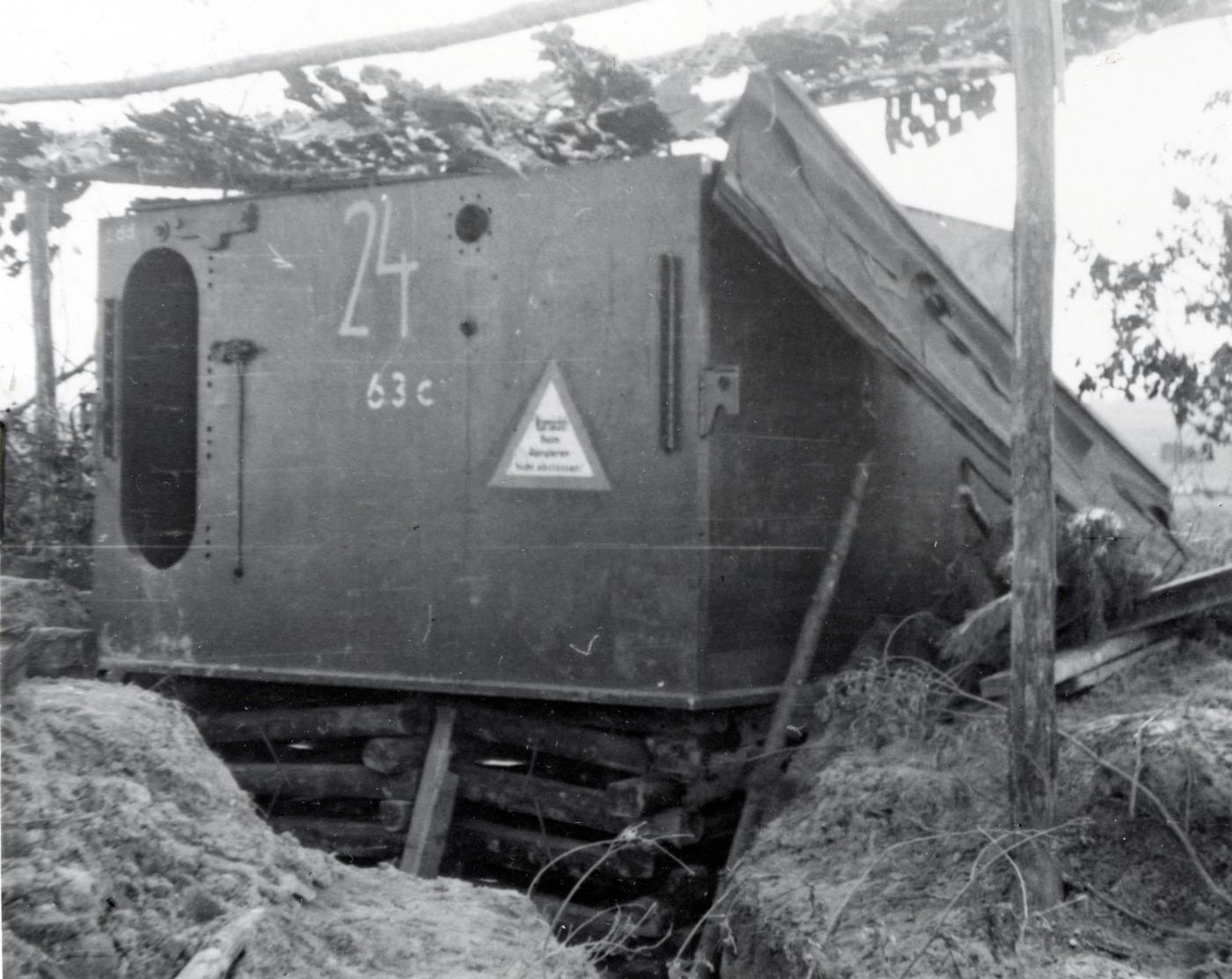
The lower living quarters for the three-man crew. This would be buried at the base of the Pantherturm, with the escape door (at left) exiting to a hidden trench. Image: NARA
This was fixed by adding an armored plate for additional protection to this sensitive area.
This also provided additional protection against plunging artillery fire.
One benefit of the later bunker construction was that the Panther turrets were provided with a power traverse mechanism.
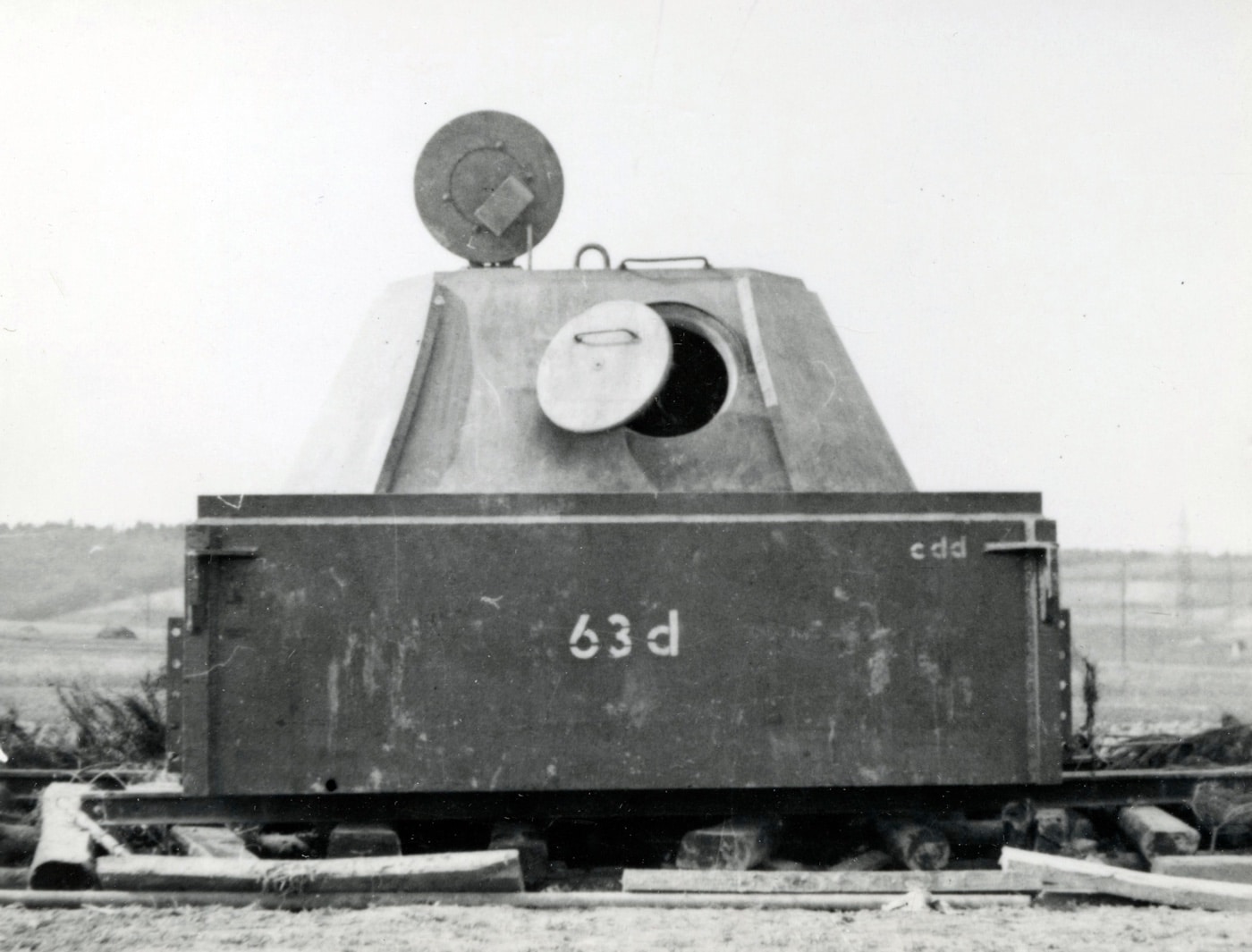
The rear of the Pantherturm, showing the rear escape hatch and the simplified top hatch (with periscope) of the Ostwallturm. Image: NARA
These were mainly seen in use on the Hitler Line in Italy.
Later, A jot down turrets were refurbished or taken from derelict vehicles and used.
The led to a slightly redesigned Panther turret made specifically for the Pantherturm fortifications: the Ostwallturm.
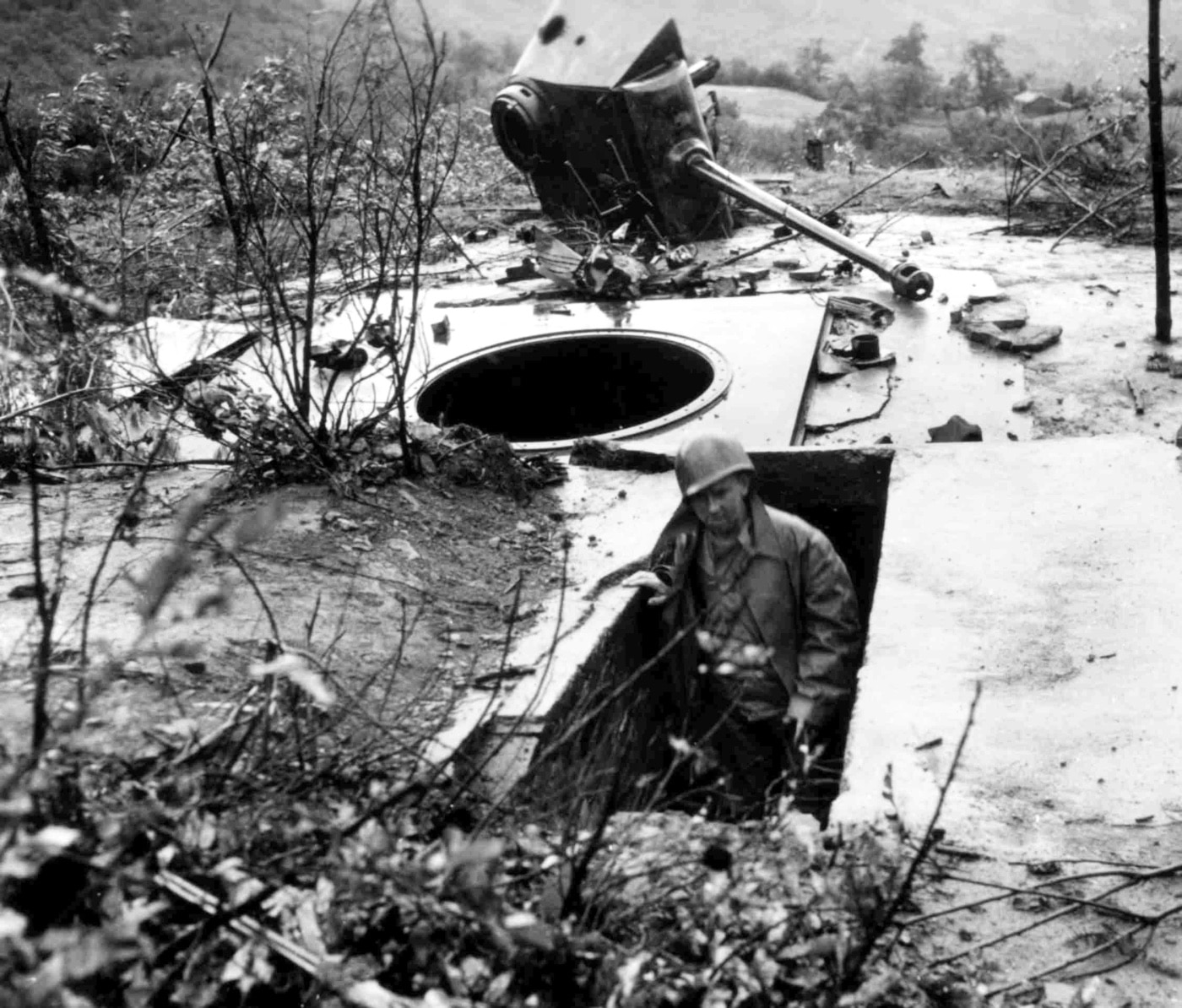
A demolished Pantherturm and its concrete position. It was located near Pistoria, Italy, in October 1944. Image: NARA
The Ostwallturm was often equipped with the Nebelwurfgerat close-defense weapon that could fire S-mines or smoke grenades.
This was the quickest emplacement of a Pantherturm, although not a sustainable method.
The Pantherturm used a crew of three: commander, gunner, and loader.
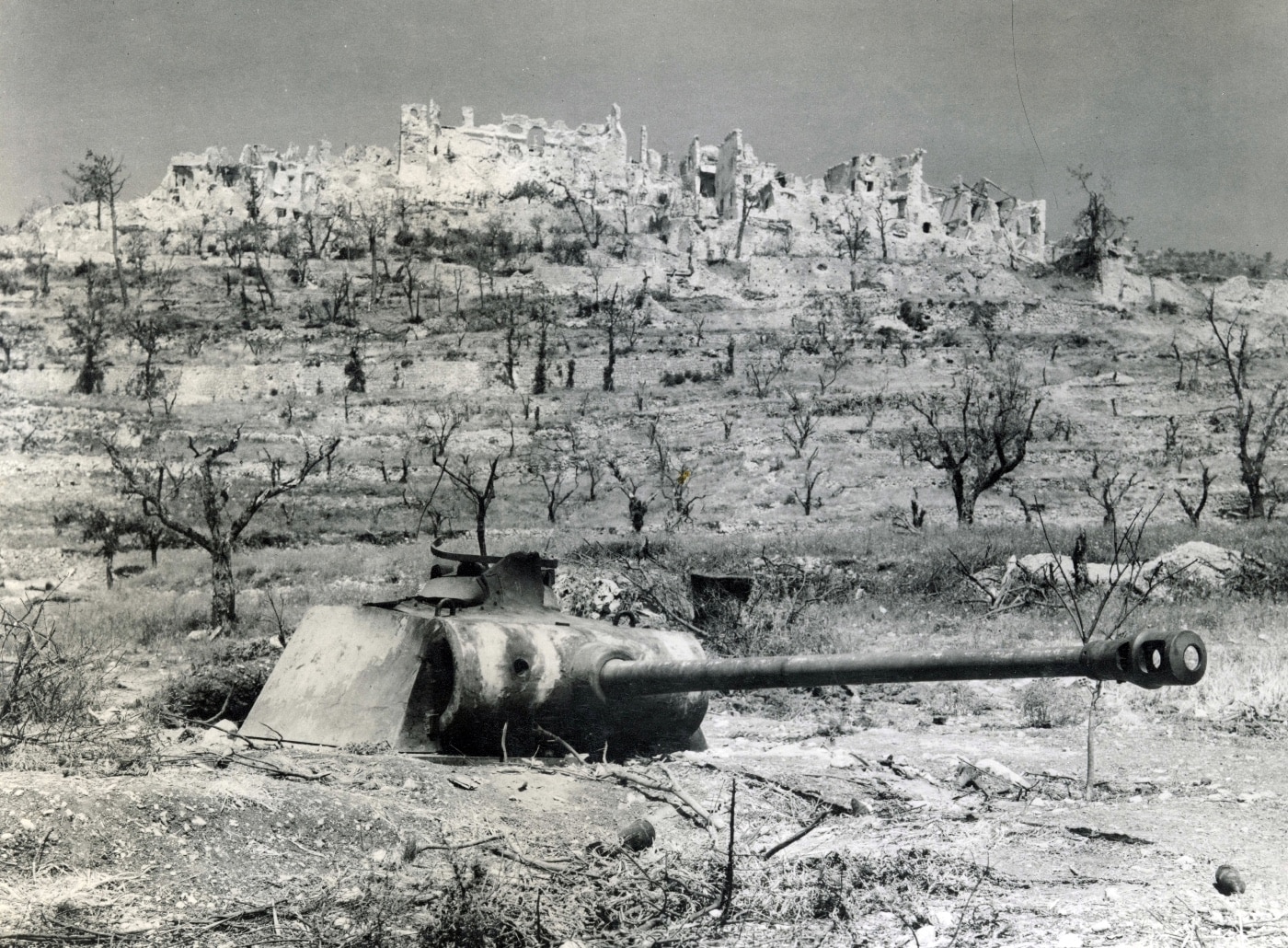
A Pantherturm below Piedmonte, Italy. This was a straight use of a Panther A turret, without additional roof armor. Consequently the top of the turret was punctured by plunging artillery fire. Image: NARA
A Festungs Panther Turm company consisted of up to 12 turrets.
The Pantherturm bunkers were well-respected and they took a heavy toll on Allied armor, particularly in Italy.
This basic lay-out was strengthened by mobile forces in the form of assault guns, tanks and Nebelwerfer batteries.
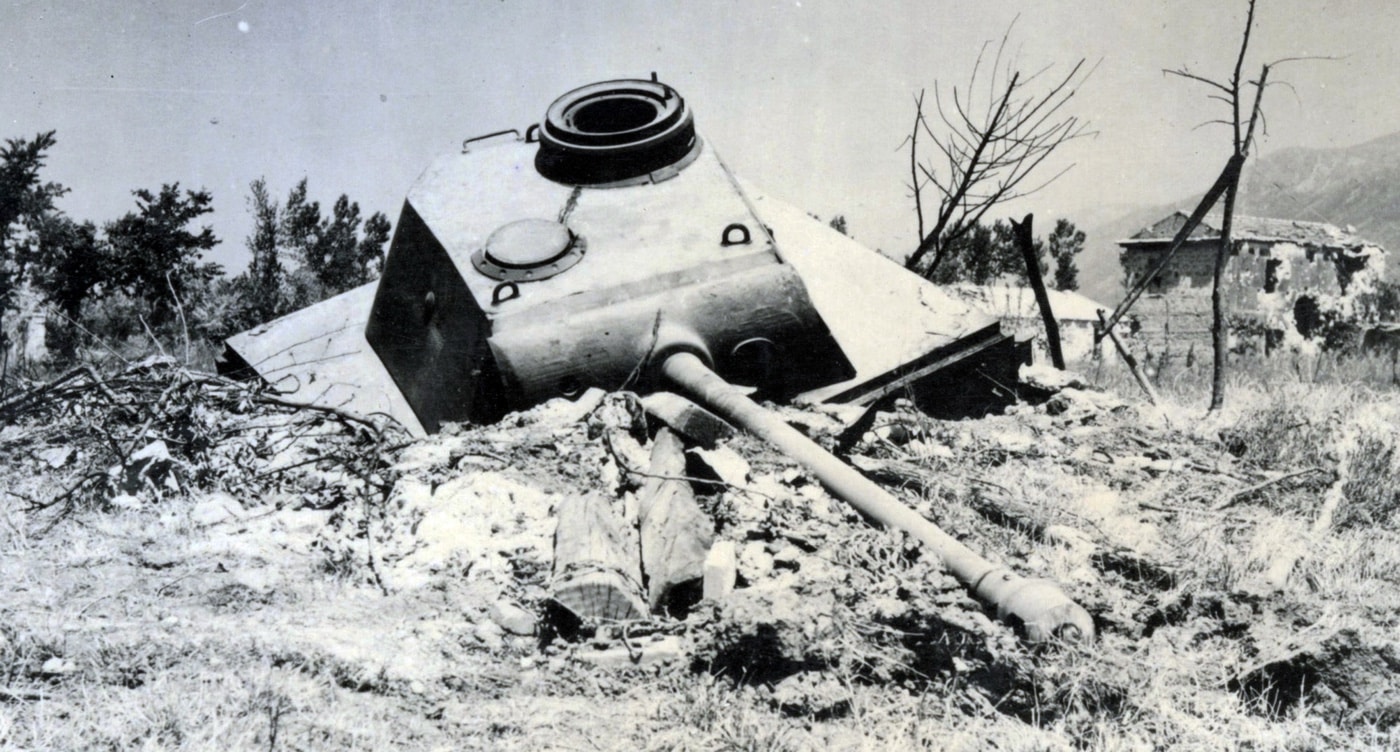
A destroyed Pantherturm in Italy during 1944. This example used a turret taken directly from a Panther Ausf. D. Image: NARA
All anti-tank guns were well dug in and completely concealed.
Losses among attacking tanks in these cases were frequently severe.
In Italy, the Panther turret bunkers delivered a tremendous return on Germanys anti-tank investment.
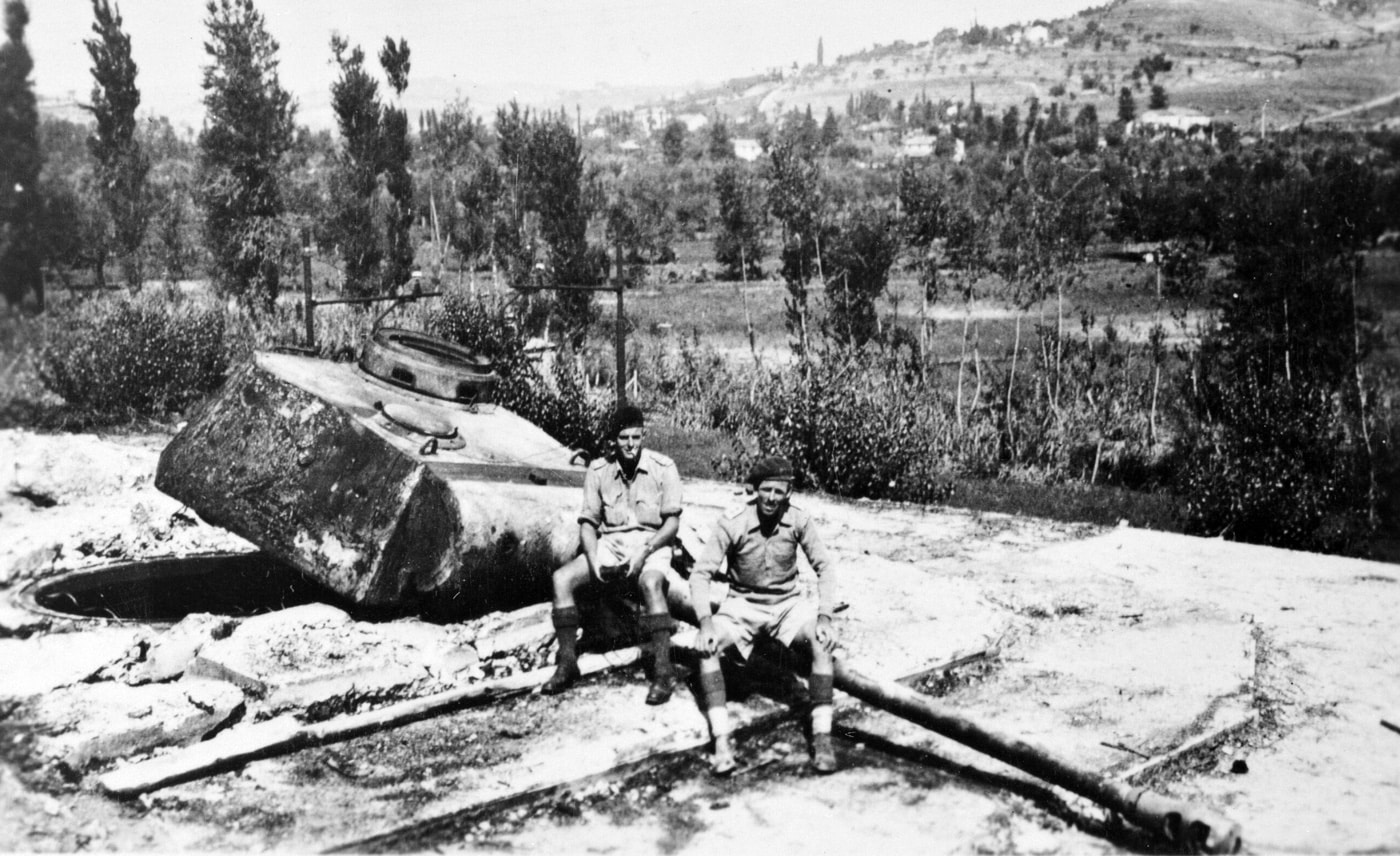
A dislodged Pantherturm (Panther Ausf D type). Note details of the concrete base which is clear of any vegetation that might interfere with the turret traversing. Image: NARA
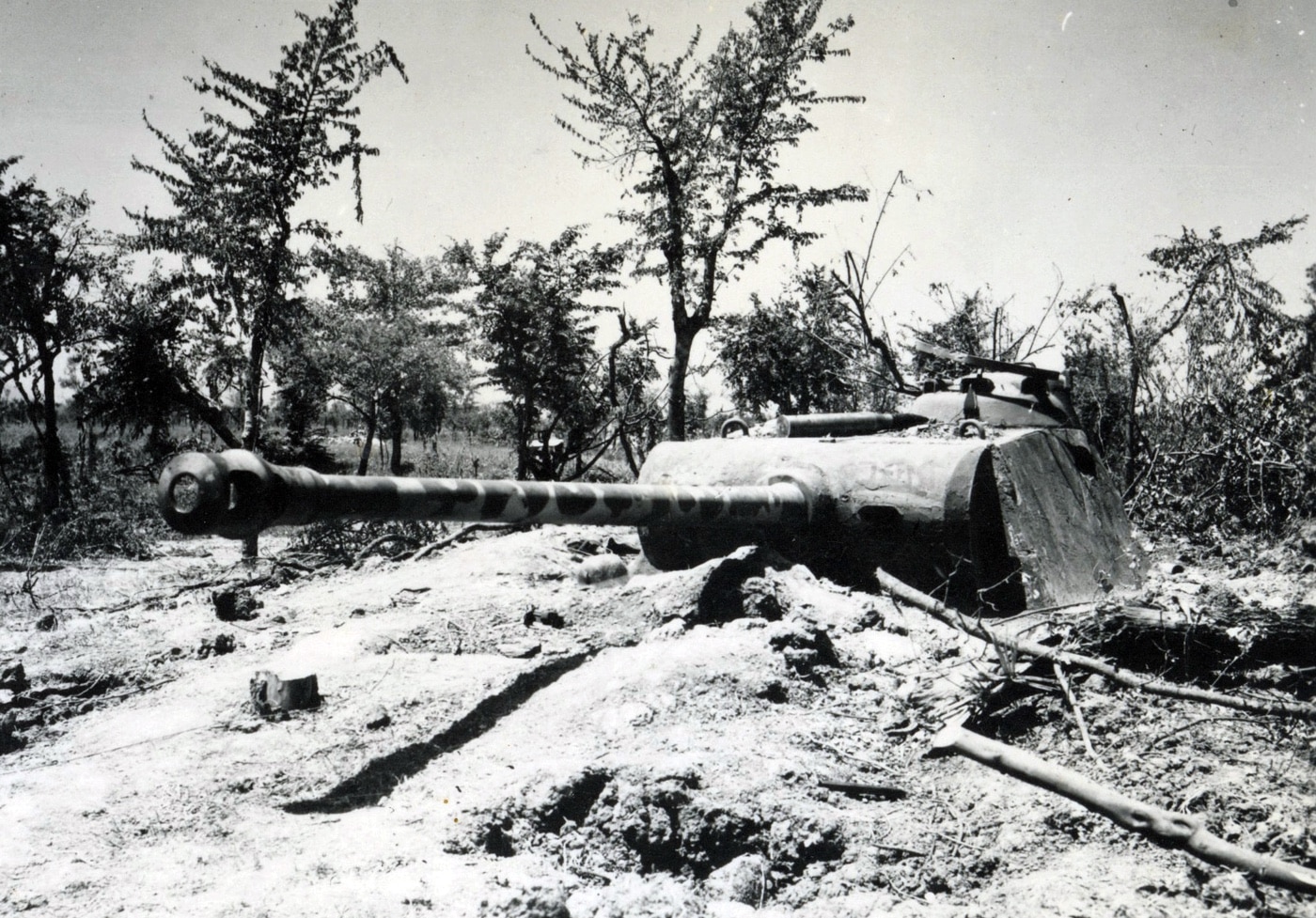
A good view of the Pantherturm’s powerful 7.5cm KwK 42 L/70 barrel that is 17 feet, 2 inches long. Note the 7.5 cm round on the turret and the camouflage paint on the barrel. Italy 1944. Image: NARA
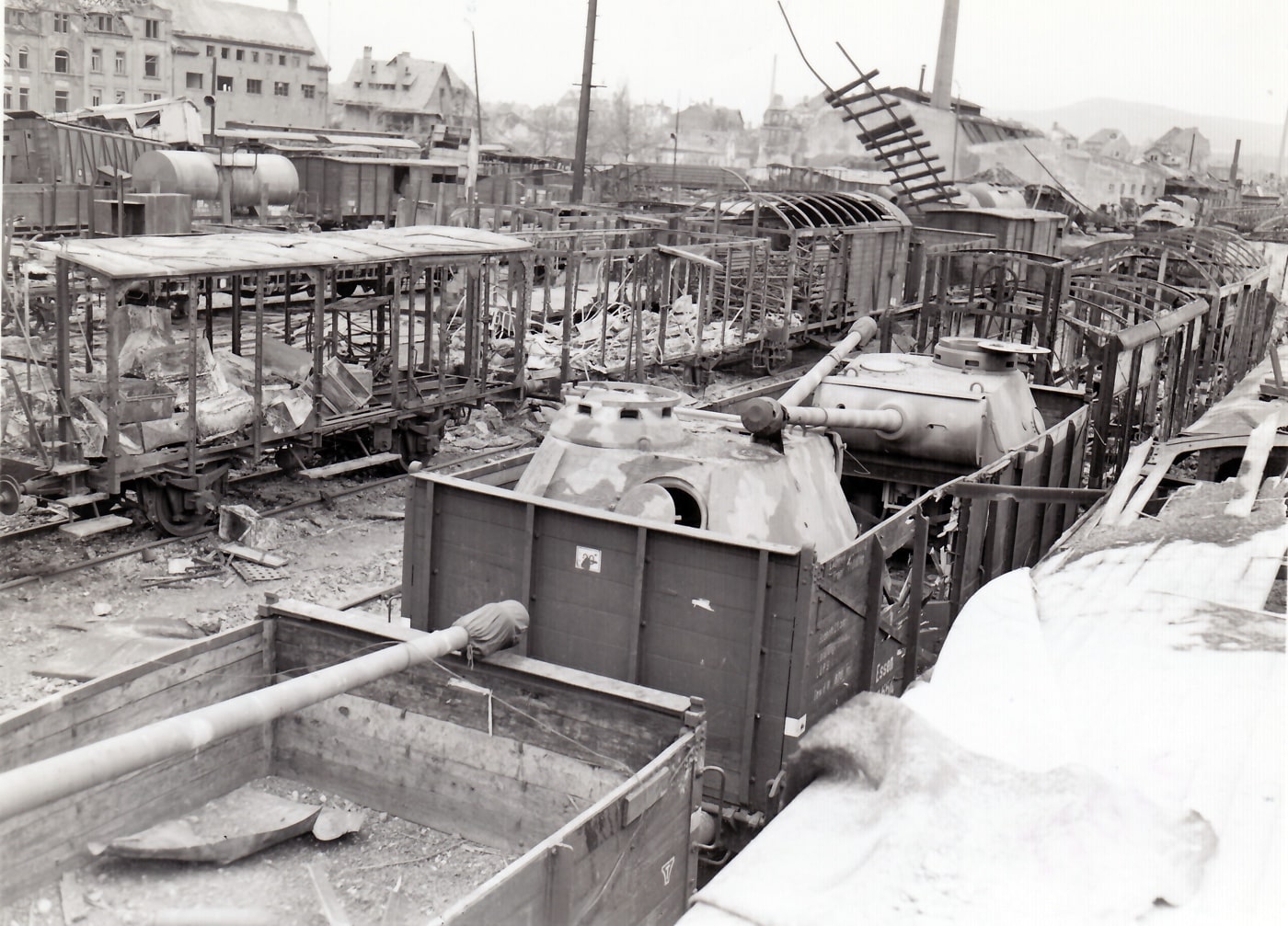
These Panther turrets were captured by Allied forces and were not used in tanks or Pantherturms. Image: NARA
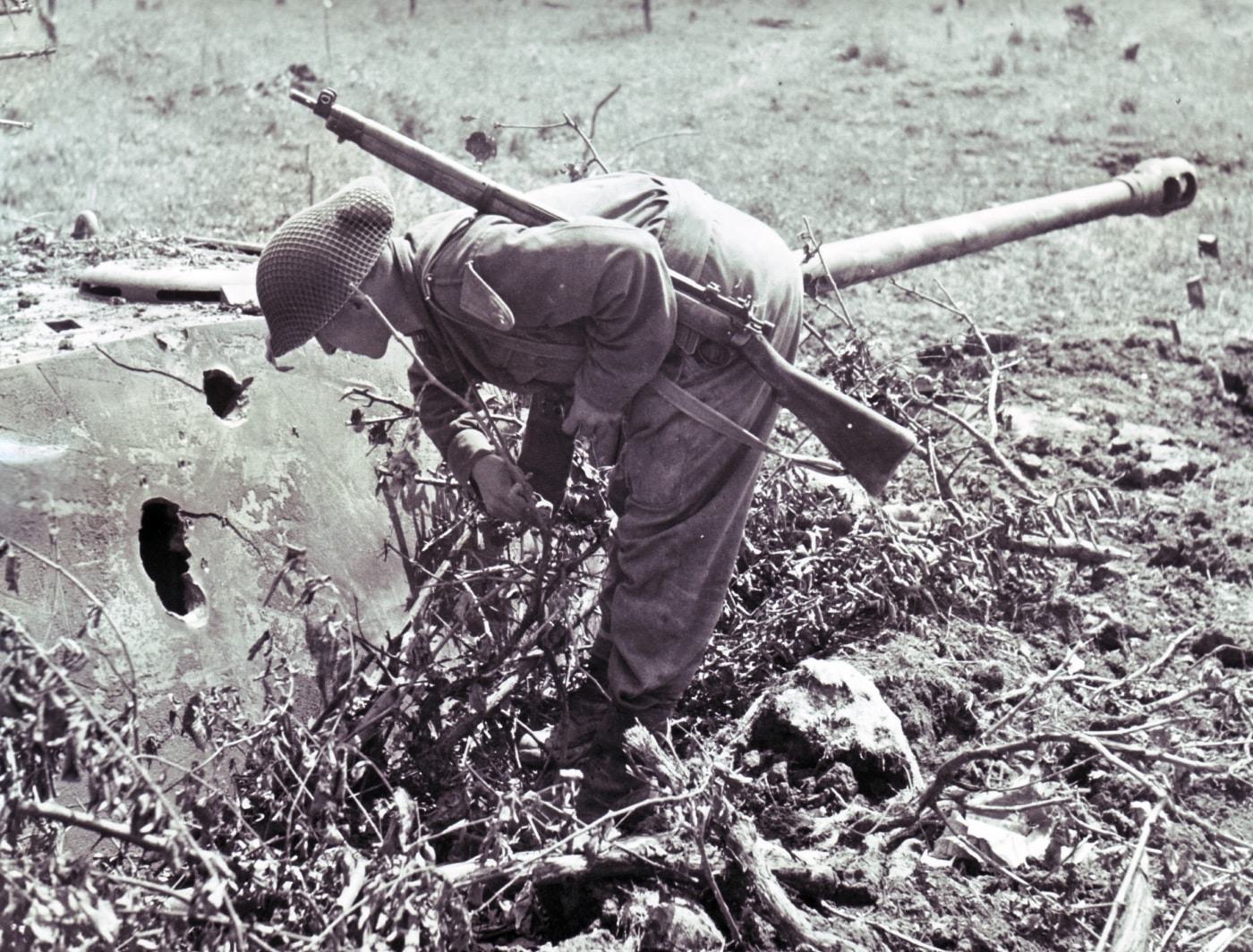
The Panther’s turret side armor proved to be a weakness on the Panther tank, and many Pantherturm bunkers were eliminated by side penetrations. This example is from Italy in 1944. Image: NARA
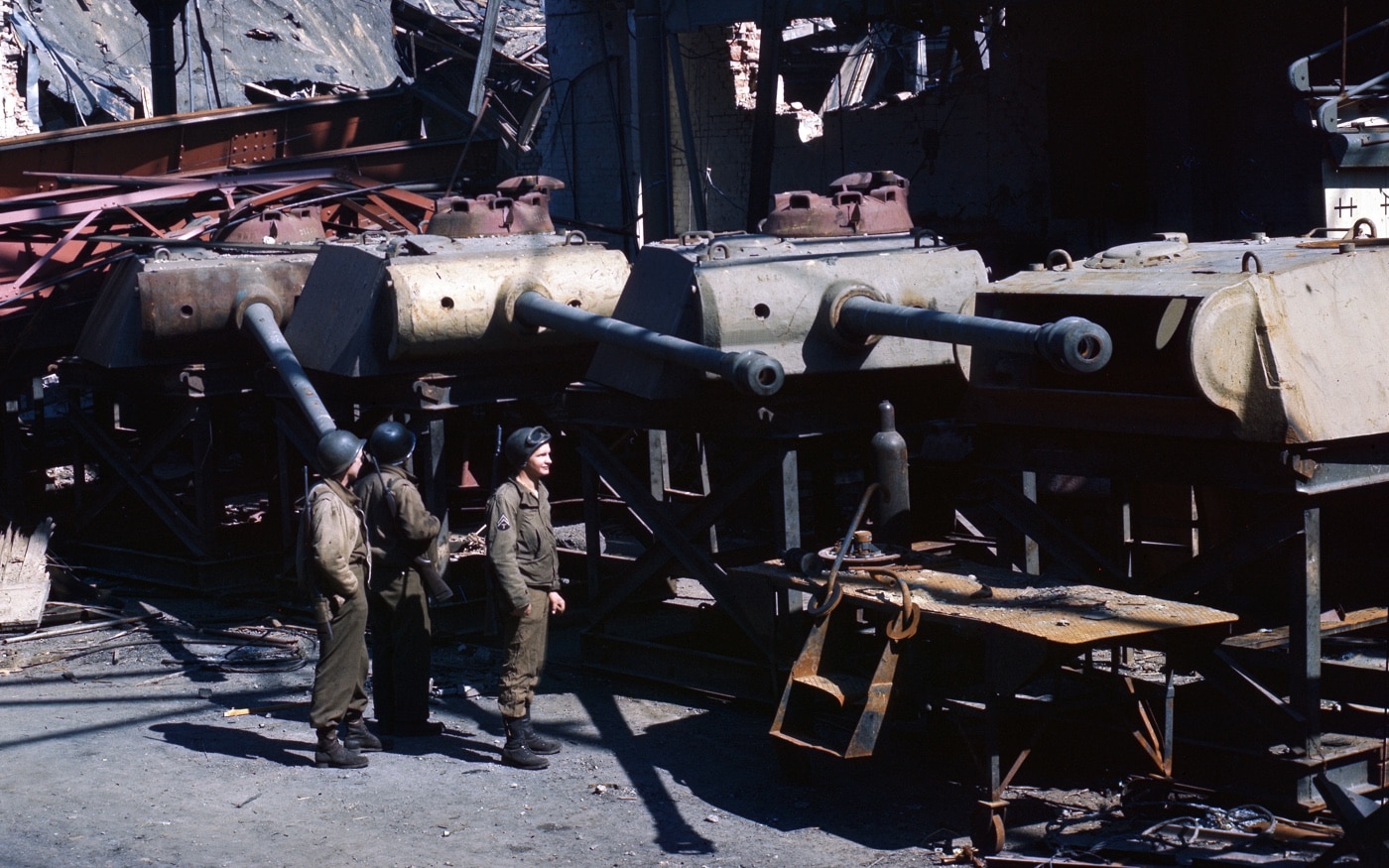
American soldiers look over captured Pantherturm in a bombed production center in Germany. From right to left: an Ostwallturm, a Panther G turret, two Panther A turrets. Image: NARA




